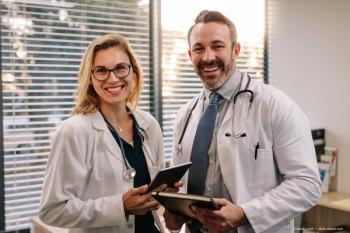
Survey: Pandemic could leave children with less access to ophthalmologists
A survey by the American Association of Pediatric Ophthalmology and Strabismus found that the COVID-19 pandemic could leave some pediatric ophthalmology practices highly strained, possibly beyond repair.
Pediatric ophthalmologists are often seen as a rarity today, with only about 1000 to serve 75 million children in the United States.
Even as other physicians have fled private practice for hospitals or have been gobbled up by private equity firms, most pediatric ophthalmologists remain in private practice.
Unfortunately, the factors that make the specialty uncommon have also made pediatric ophthalmologists and their patients uncommonly vulnerable to the ravages of the coronavirus disease 2019 (COVID-19) shutdown, according to a joint statement from the American Academy of Ophthalmology and the American Association for Pediatric Ophthalmology and Strabismus (AAPOS).
According to the survey by AAPOS, pediatric specialists are struggling to keep their practices viable in the wake of the COVID-19 shutdown.
It noted that “the factors that make the specialty uncommon have also made pediatric ophthalmologists and their patients uncommonly vulnerable to the ravages of the COVID-19 shutdown.”
As a result, children in America could suffer medical outcomes that are not typically seen in first-world nations.
AAPOS surveyed its members in April, a month after the shutdown started and during the first peak of COVID-19 cases in the US, to determine the impact of the pandemic on private and institutional pediatric ophthalmology practices.
The results signaled potential access-of-care issues for children with blinding conditions and life-threatening diseases.
While all sectors of pediatric ophthalmology were affected by the reduction in patient volume, private practices were the hardest hit. Among the survey’s findings:
- Practice revenue was 13 percent of usual, across all practice types.
- 10 percent were considering bankruptcy, nearly all of whom are in private practice.
- More private practice physicians than employed hospital and academic physicians (27 percent versus 7 percent) expressed plans to limit Medicaid patients.
- 9 percent said they planned to retire earlier than they had initially planned.
“This is an alarming, important and pivotal moment in the history of medicine,” Shira L. Robbins, MD, professor of ophthalmology at the Shiley Eye Institute, University of California-San Diego, who led the survey effort, said in a statement. “We appeal to the legislative bodies to support pediatric ophthalmologists to champion eye health and vision of our most valuable commodity – our children.”
Robbins pointed out that pediatric ophthalmologists have limited access to federal financial assistance programs because the assistance is based on treating elderly Medicare patients, while other assistance programs have left many fixed practice expenses uncovered and only partially covered staff and physician salaries.
AAPOS conducted a follow-up survey in July to gauge the extent of the recovery since the initial shock of the April shutdown. While it shows some improvement, many pediatric ophthalmologists continue to struggle to remain in business.
Robbins predicts that as the pandemic continues, so will the strain on the delivery of medical care.
Among the topline results:
- 3 percent of practices are closing permanently
- At least twice as many practices plan to limit Medicaid compared with pre-COVID levels
- 5.4 percent are considering or have declared bankruptcy
- 42 percent feel their practice viability remains “day to day” with bankruptcy as a possible outcome
- 52 percent experienced a salary reduction
- 26 percent received less than $1,000 from the first round of assistance from Health and Human Services
- 51 percent continue to operate with reduced staff compared to pre-COVID levels
- 91 percent expect further staff reductions (up to 25 percent) following completion of Paycheck Protection Program (PPP) loan requirements
“Pediatric ophthalmologists are rare medical subspecialists with the majority working in private practices,” Kathy Lee, MD, PhD, president of AAPOS, said in a statement. “Without continued governmental financial support, many will not be able to sustain their practices contributing to an even greater access problem for children with eye problems.”
Newsletter
Don’t miss out—get Ophthalmology Times updates on the latest clinical advancements and expert interviews, straight to your inbox.













































